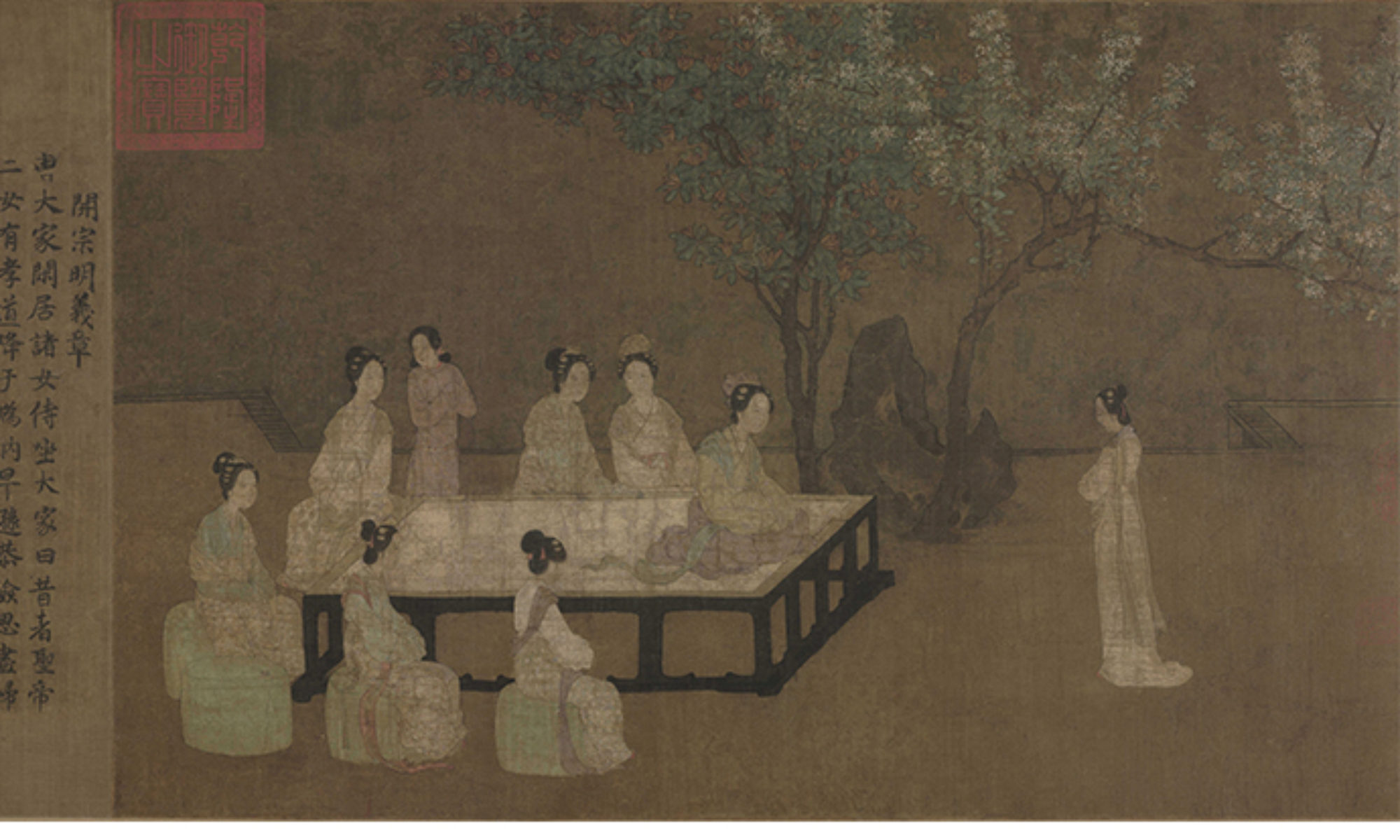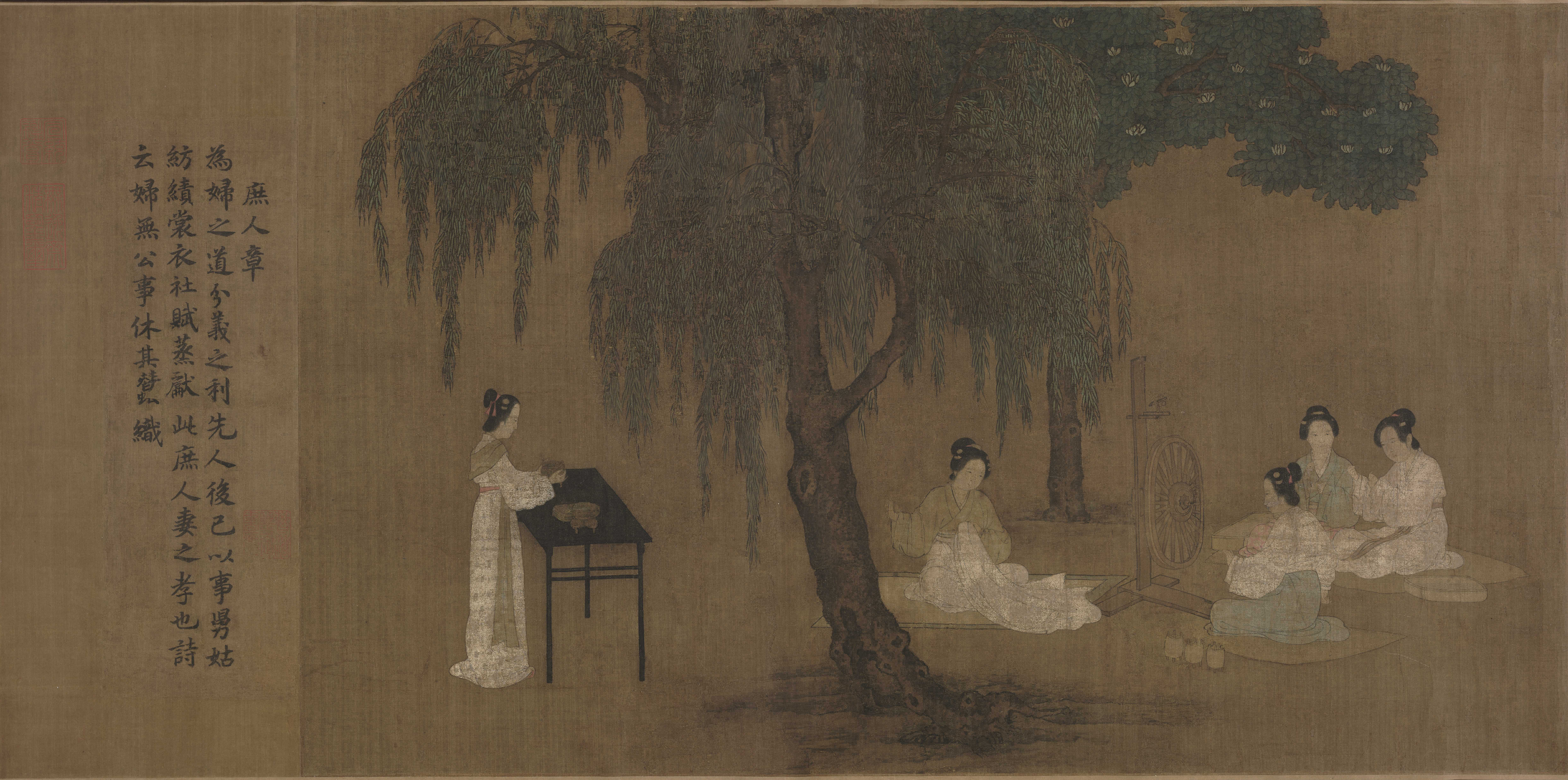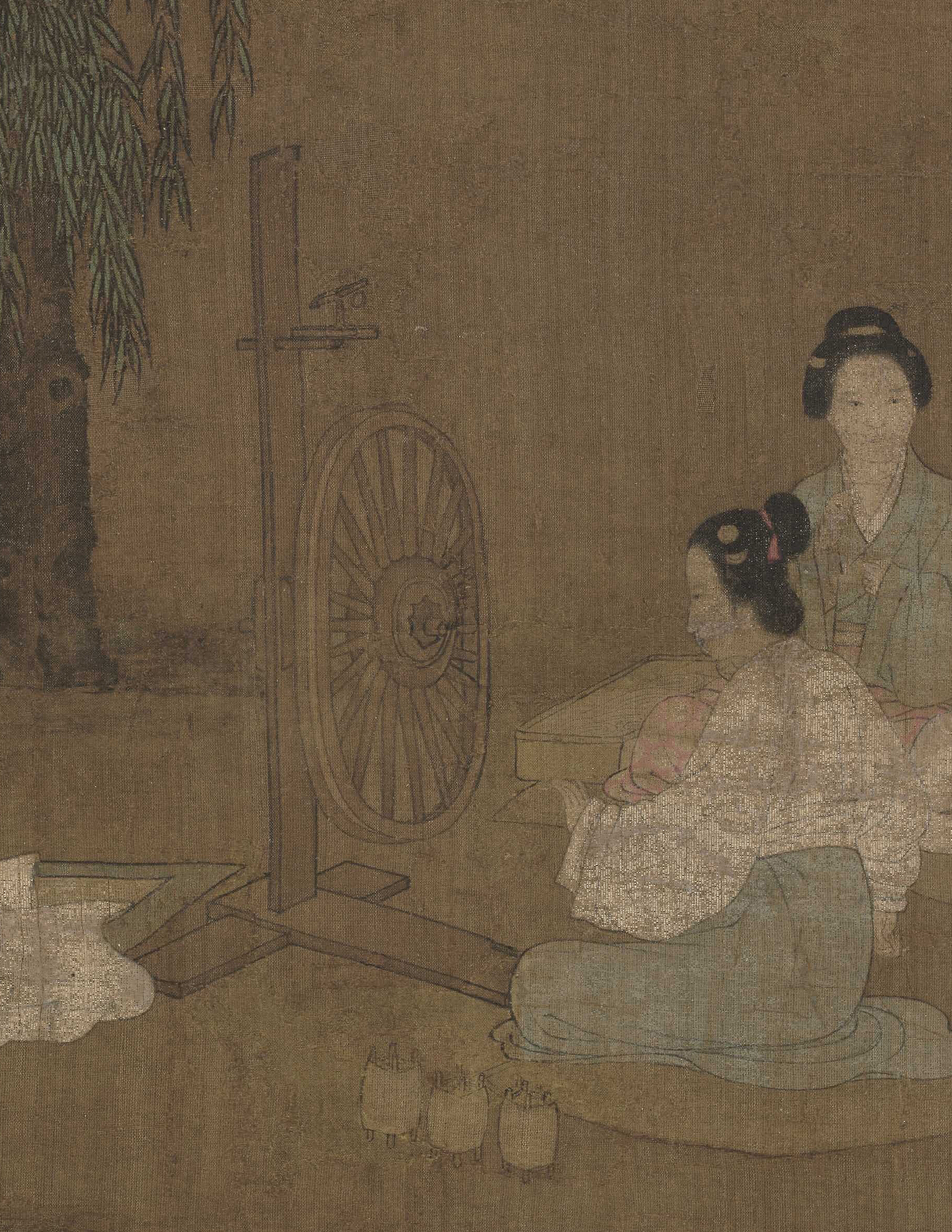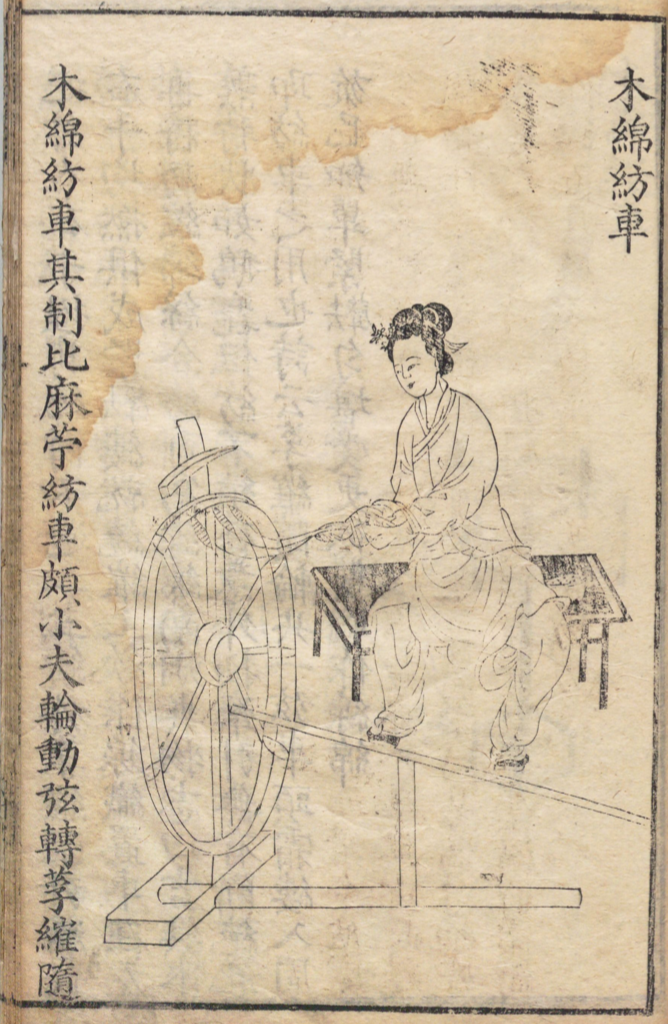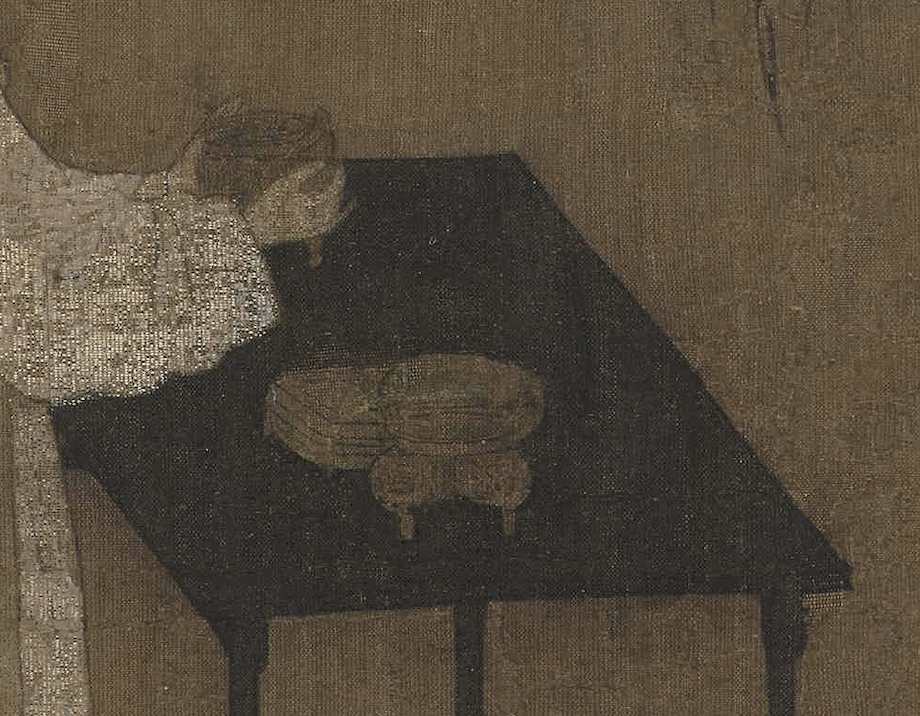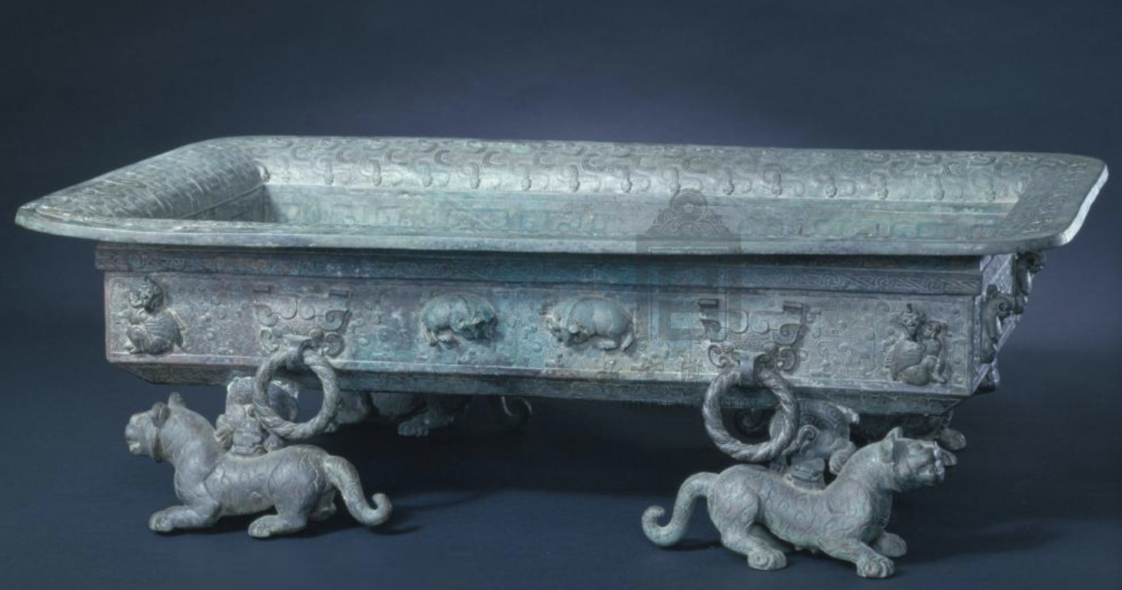“In carrying out the way of the wife, understand the benefits of righteousness. Put others first and oneself last, thereby serving your parents-in-law. Spin thread, make garments and supply the sacrificial foods for the altars. This is the filiality of the wife of a commoner. The Classic of Poetry says, ‘A woman who has nothing to do with public affairs / Leaves her silkworms and weaving.”
The Chapter Five: “Common People” depicted the five court ladies. Four women sit on the mats and rugs of the ground while one stood behind the table on the left. These images of ladies are based on the characteristic of beauty in the Tang Dynasty. The painter used continuous and smooth lines to render the women with graceful and elegant faces and bodies. Their clothes are elegant green and white soft silk illustrating that they are court beauty rather than rural. Although the ladies are placed in the empty background, the scene shapes the isolated and private female space. The ancient bronze mirror placed on a high table shows the elegant taste of these women and the etiquette of textile production. Paradoxically, “Common People” did not render working-class women in realistic rural life. The purpose of this scene is to give the emperor’s empress and concubines idealized models as the symbolic meaning.
To summarize: Womenly work has three significance for women, family, and the country. First, women as labor create economic value. Second, rituals related to women’s work represented the symbolic significance for rulers. Third, working on sericulture and textiles cultivated female personal virtue. The government encourages to create a large number of works of art about womenly work and widely disseminate because of the government’s encouragement to the textile industry, the state’s tax policy, the imperial court’s advocacy of Confucian ethics, and the strengthening of political propaganda function of court paintings. Moreover, the viewers, on the one hand, could learn how that court ladies cultivated their own morality through textiles, and on the other hand, could view that the beautiful costumes ladies wore and perceive the ideal results achieved by this moral cultivation.

